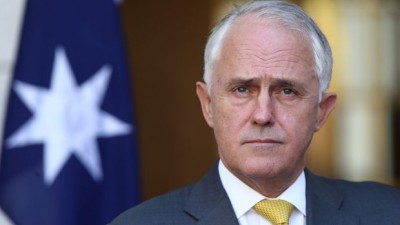Australia’s Turnbull Government’s Anti-Terror Tool Kit

It has been a week of bollards in Australia. And defence barriers. And hedges and vegetation. No, not the radio garden hour, or the herbaceous borders special featured on prime time television, delivered by a bearded man with a facial forest so vast it could regenerate several lost species.
This is the anti-terrorist flick of the week, and given that Australia’s Turnbull government is nearing its next blow, awaiting another stroke in the aftermath of the citizenship crisis, a suitably urgent package filled with alarmist goodies to distract the public was in the offing.
The Prime Minister was grave in his August 20 statement introducing the “toolkit” to reduce terrorist threats, part of an investigation solicited last year after the carnage witnessed in Nice along the Promenade des Anglais.
“As we have seen from tragic events in Paris, London, Berlin and Barcelona, terrorists continue to target crowded places.”
With each murderous adventure, often culminating in the shooting death of the perpetrator, the security doyens are asked what can be done. The behind-closed doors approach varies between overexertion and inactivity. An entirely secure strategy would entail abolishing freedom of movement and basic civil liberties. What matters for the public is the reassurance, the placebo effect.
The public face of such an approach must seem splendidly busy, putting more personnel on the streets, increasing awareness among members of the population, and getting various defences at the ready.
In Sydney, Turnbull made a special point of appearing in a manner that only gave the impression he was overegging the pudding. (Is Australia waiting for its own variant of the Intifada?) Alongside him were the New South Wales Minister for Police Troy Grant, the NSW Minister for Counter-Terrorism David Elliott, the Federal Police Commissioner Andrew Colvin, the NSW Police Commissioner Mick Fuller, and the Commonwealth Counter-Terrorism Coordinator Tony Sheehan.
The strategy, released last Sunday (always good to get people on their day of rest), emphasised the threat posed to areas frequented by the humble civilian: sports stadia; pedestrian malls; shopping centres.
“Offenders with guns or knives or bombs or chemical devices are also a threat, it’s a full range of threats. But what Nice demonstrated was the lethality of somebody using a truck in a crowded place.”[1]
A response fashioned on various structural and “resilience” measures was considered vital, including those traditional intrusions such as closed-circuit television. (Surveillance always goes down well as a seller when attempting to foil the next attack.) Importantly, Turnbull insists on casting the language differently: assessing a site’s vulnerability and then “see how they can make it safer”. Terms like “militarise” or a “ring of steel” are ignored.
At the same press conference with Turnbull, NSW Police Commissioner Fuller recapitulated those usual fragmentary pointers that may say nothing about a potential terrorist attack but furnish a tick-list for the paranoid and concerned. “It’s about looking for a person that may be suspicious, maybe sweating profusely for the time of year, dressed inappropriately, carrying a bag that doesn’t fit within the environment.”[2]
What impressed Turnbull was the need, in various cases, to adopt a somewhat different take:
“You can obviously have bollards, you can have seating… you can have works of art, you can have steps, planter boxes.”[3]
There has been no criticism of these measures, virtually no protest, and certainly no disagreement. The state is flexing its muscles, and the critics are on holiday. The fear factory has become a factory of acceptance.
Papers sport resounding measures of support; everyone, it seems, wants a hand in perpetuating the national security state against threats of inflated potency. Never mind their inchoate nature. Members of the business community were reported in the Australian Financial Review as approving of “subtle” barriers – architectural or natural – that would speckle the city landscape.[4]
For Ken Morrison, chief of Property Council of Australia, intelligence, security and police forces might well be shouldered with the primary responsibility in terms of anti-terrorist measures, but “there is a lot that owners can do.”
Peter Allen of the Shopping Centre Council of Australia was also willing to add a supporting voice to the latest anti-terror strategy. Those involved in the shopping centre industry were keen to work together with “relevant security agencies”.
So, no demurrals, minimal scepticism and a conspicuous lack of comment about the drumming nature behind this latest anti-terrorism response. The sheer school-boy eagerness in wishing to be relevant in a world of cruel and sudden killings, in wanting to fear, is gratingly apparent.
“Our agencies,” stated Turnbull before the gathered journalists, “are the best in the world.”
Such comments are only ever made to render smaller threats significant, the lesser enemy rigorously dangerous.
But what is even more troubling – far more than this urchin enthusiasm – is the sense of permanent emergency, its normalised footing. As the “threat is constantly evolving”, it follows that Australian authorities must make sure that they, too, “are constantly improving and updating the measures we have to keep Australians safe.” This will mean more obstacles: more barriers; more bollards and, of course, more surveillance.
Dr. Binoy Kampmark was a Commonwealth Scholar at Selwyn College, Cambridge. He lectures at RMIT University, Melbourne. Email: [email protected]
Notes

